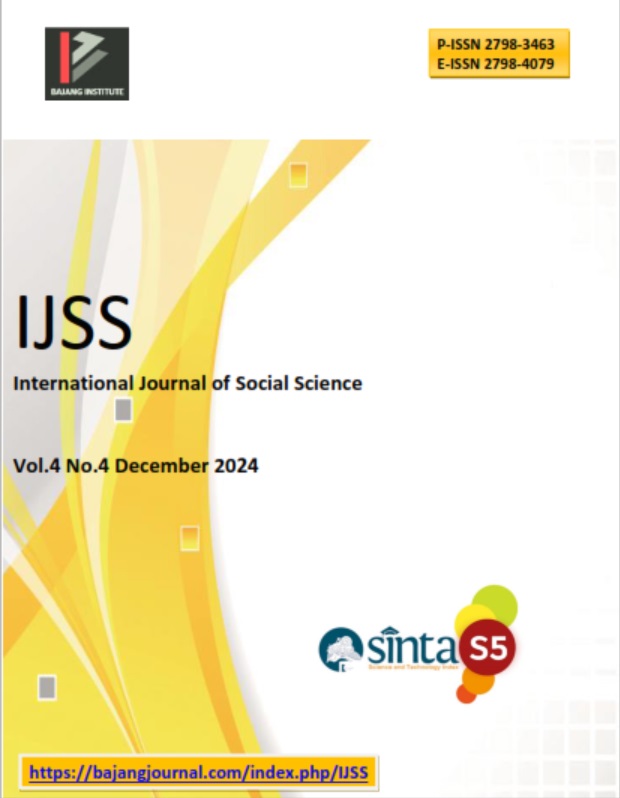ANALYSIS OF KNOWLEDGE AND RISK FACTORS OF ADOLESCENT BEHAVIOR AGAINST NON-COMMUNICABLE DISEASES IN BINTAN REGENCY
DOI:
https://doi.org/10.53625/ijss.v4i4.9061Keywords:
Knowledge, Risky Behavior, Non-Communicable Diseases, AdolescentsAbstract
Non-communicable diseases (NCDs) are diseases that do not pass directly from one individual to another. WHO mentions that non-communicable diseases (NCDs), especially cardiovascular diseases, cancer, diabetes, and chronic respiratory diseases are the causes of death in the world. Meanwhile, NCDs in Indonesia are the highest cause of death and are beginning to threaten adolescence. Prevention of NCDs in adolescents can help reduce the prevalence of NCDs in Indonesia. Because the risk factors that are possessed during adolescence will affect the incidence of NCDs in adulthood to old age. Knowledge or cognition is a domain that has a great influence on a person's actions or behavior. The purpose of this study is to analyze the knowledge and risk factors of adolescent behavior towards non-communicable diseases in the Bintan Regency area. This study uses a descriptive method with a cross sectional approach and data collection is carried out using a questionnaire. The research sample amounted to 219 students who were taken using quota sampling from Junior High School (SMP Negeri 1 Bintan, SMP Negeri 2 Bintan and Madrasah Tsanawiyah Negeri) in Bintan. The data obtained were then analyzed descriptively. The results of the study showed that 44.2% of adolescents in Bintan Regency had a good level of knowledge about NCDs and a small part (10.3%) had less knowledge. Based on the behavioral description, 17.9% are at risk of NCDs, of which 50.9% are women. The results of the bivariate test showed that there was no relationship between knowledge and behavior, where the significance of the p-value was 0.174 (> α =0.05). Knowledge is a predisposing factor for behavior formation, therefore there needs to be an effort to increase knowledge about non-communicable diseases in adolescents in schools
References
Alcianno G. Gani. (2017). The Influence of Social Media on the Development of Adolescents. Journal. universitassuryadarma.ac.id/index.php/jmm/article.
Arikunto, Suharsimi (2010), Prosedur Penelitian, Rineka Cipta, Jakarta
Dinas Kesehatan Kabupaten Bintan. (2021). Laporan Kesehatan Kabupaten Bintan.
Hamzah, B & Hamzah, S.R. (2021). The Influence of Health Education with Social Media on Non-Communicable Disease Prevention Behavior in Adolescents. Journal. Gema Wiralodra, 12(2), 270-290.
Kemenkes RI. (2012). Penyakit Tidak Menular. Journal. Poltekkes-tjk.ac.id.
Kemenkes RI. (2019). Buku Pedoman Manajemen Penyakit Tidak Menular.
P2PTM Kemenkes RI. (2020). Penyakit Tidak Menular Kini Ancam Usia Muda. https://kemkes.go.id/article
WHO. (2020). Lembar Informasi Global Youth Tobacco Survey (GYTS) 2019. https://www.who.int/docs/
WHO (2018). Noncommunicable Diseases Country Profiles 2018. World Health Organization
Widyawati (2021). Non-communicable diseases are now threatening young people. Indonesian Google Scholar
Yuningrum Hesti, dkk. (2021). Faktor Risiko Penyakit Tidak Menular (PTM) Pada Remaja. Journal. Respati.ad.id.
Downloads
Published
How to Cite
Issue
Section
License
Copyright (c) 2024 Artia Diarina, Suharti Suharti, Alkausyari Aziz, Elsa Gusrianti

This work is licensed under a Creative Commons Attribution 4.0 International License.

















